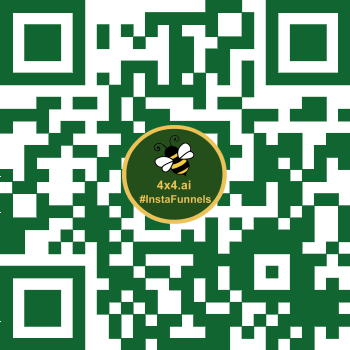
I love telling people where to go!
As someone on the spectrum, I have a passion for wayfinding. Inefficient systems can be frustrating, but there are also great physical and augmented reality (AR) solutions out there.
My team has spent 9 years building structures for things that "sort of" make sense today and testing them out, knowing they are years away from practical use.
We have also released some products, such as GeoCAST, which has slowly built a great community in my area as a testing ground.
I have compiled a timeline of my early concept video in 2013 until now. While most of us want a "free guy" world, we are far from it and I want to focus on utility as I caution against too much information being available at once. I've done it - it's not as great as it appears on video or film. AR will be profound and I will continue to build for the future with my team and communities in education, history, tourism, and commerce.
This is all running on our proprietary serving structure for compression, load balancing, and streaming, as well as custom pose work for cameraless, sensor-driven 6DOF WebAR.
While our journey is not complete - please stroll along with me from Point A as we go past the second star to the right - to infinity, and beyond.
Wil McReynolds
CVO | CTO - KP9 Interactive
2013 - The Beginning
Top-down maps, like the "you are here" kiosks found in malls and theme parks, can be inefficient because people often forget which way they were facing by the time they get a certain distance from the kiosk. This can lead to them looking for another wayfinding spot, trying to find the one they were just at, asking someone, or looking at their phone. It can sometimes feel like we need wayfinding for wayfinding.
I've always relied on line-of-sight directions, pointing in the general direction to get started. Adding arrows, paths, spatial audio, and haptic feedback are all part of the future, but what makes the most sense for the most entry-level users? Getting people accustomed to basic features and learning from them as we all grow is important.
Companies like Wikitude and Metaio helped me get a good foundation, but they couldn't do everything I wanted. So in 2017, we created our own Geo engine and ported it to WebAR in 2019. You can scroll down to see those years.
2014 - conceptual state - leveraging my local Area as a litmus test
2016
Had our first real adopter - a heritage village museum was interested in AR - specifically wayfinding for their outdoor village - content and lacking infrastructure caused it to stall.
2017
This was a REALLLLLLY BIG year for us - It's when KP9 Interactive was born
Cross Province Scavenger Hunt for Tom Thomson Art Gallery and the Artists that created the journey/installation was the first real viable success for the beginning of what I wanted.
I started implementing the Epson Moverio BT-200s that I had since 2014 to see where I could take it. The staring by people really deterred me TBH.
All of these tests were fully functioning demos, some with complex backends for unique ID endpoints or databases for sharing and pinning content. I would post the end result on LinkedIn and see what interest there was. I often received responses from serial entrepreneurs looking to get rich quickly, but I was starting to realize that this was going to be a "long game," so I pivoted and created KP9 Interactive. I returned to marker/markerless as it had the most viability for an entry point. GPS, beacons, point clouds, magnetic reading - they were too complicated to scale and I couldn't envision the right interface. Glasses were also too far off from where I wanted them to be.
The start of KP9 branding
2018 - Big Tech enters
We showed our tech to an AR insider at a company - and they wanted us to use their computer vision and we would be promoted on the launch of said CV. When the launch came we were pushed to the bottom for some reason. 3 months later they gave a demo of something that was similar. Didn't matter. It's not what I had in mind overall, haha.
Focusing on more "utility"
Realized how hard this was going to be indoors - and at scale as everyone I talked to didn't want to do the work to update the information and based on what I'd already learned from the past - it would never scale the way I wanted without a lot of work and education/upkeep.
One of the thousands of videos of me testing and directing next steps with my team.
Showing different data layers from Yelp Reviews to Tweets - as I felt users will need to be able to filter their content - all of this was about function - not form. We refined a lot on the journey as you will see further down if you are still with me. Finally decided to ditch indoor altogether.
2019
The WorldCAST Platform was born as our suite of tools for Marker/Markerless/Geo
Finally - WebAR and the beginning of GeoCAST Studio
Breaking out the Epson Moverios again - this time the BT-35C which is exactly what I was was needed in 2015.
2021
(2020 was just a LOT of under the radar innovation while the world was shut down)
I created a geo based virtual safari for my kids during lockdown - with zero code -Timestamp says 2022 - but it was shot in the summer of 2021
Showing an idea for "noiseless firworks" using GeoCAST
Grey Roots picked up where they left off in 2016
GPS Sensor Driven 6DOF - for low/no light, snow storms, open water, etc. Does not require a camera feed so perfect for cameraless smart glasses with sensors.
Another HUGE moment:
2022
My position is that AR wayfinding is more accessible on a mobile device, but it can be awkward to hold your phone out in a crowd, just as it is awkward to wear most smart glasses in public. The NuEyes Pro 3e is the first pair that meets my basic needs, so we are getting closer. There is a transition period and things need to make sense for anyone, which is why we promote basic features because they work and are available today. We don't promote accuracy to the inch because we are not looking to fill enterprise needs. It's not about that for us today.
We are designing for the future of glasses, which we are years from having at a consumer level in terms of hardware and adoption. We are leveraging the different glasses that are available today, such as those with spatial audio and cameraless glasses, to avoid privacy concerns. We are also working on stand-alone 360/atmos devices and spatial audio stand-alone audio, such as AirPods, via content created and served via our GeoCAST studio on our WorldCAST platform.




Robloxing @MetaKey 🕹️ | Ex - @Flamappofficial | XR geek | On a journey to explore the Metaverse 🥽
1yFrom Top-down maps to 6DOF and flawless rendering. I think KP9 and you have come a long way. Working on AR in 2013 was way ahead of time. Now that many tech-savvy companies are working on AR and the common people are realizing the potential of AR. I think early adopter companies like KP9 will clearly make it big in this new industry. Thanks for sharing your journey. Wishing you and your team all the best, Wil